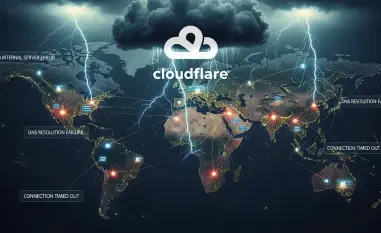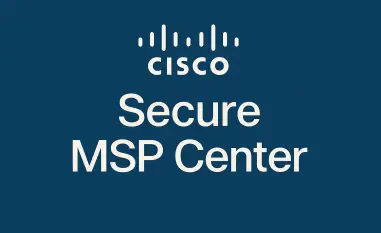Overview of the Online Privacy Landscape
Imagine a world where every online step—every website visited, every search conducted—is an open book to internet service providers (ISPs). This is the reality for many users today, as traditional Domain Name System (DNS) queries, which translate domain names into IP addresses, remain unencrypted and vulnerable to surveillance. In an era of heightened digital tracking, the exposure of browsing habits to ISPs and potential malicious actors poses a significant threat to personal privacy. This industry report delves into the transformative potential of encrypted DNS protocols as a shield against such oversight, setting the stage for a critical examination of user empowerment in the digital realm.
The current state of online privacy reflects a growing tension between user autonomy and corporate interests. ISPs have long capitalized on unencrypted DNS data to monitor activity, manage networks, and even monetize user information through targeted advertising. With privacy breaches and data scandals making headlines, public awareness of these practices has surged, driving demand for solutions that safeguard personal information. Encrypted DNS, through protocols like DNS over HTTPS (DoH) and DNS over TLS (DoT), emerges as a pivotal response to these concerns, promising to secure the internet’s foundational system against exploitation.
This report aims to unpack the mechanisms, challenges, and future trajectory of encrypted DNS adoption within the broader context of online privacy. By exploring how these technologies counter ISP surveillance, alongside the resistance they face from industry stakeholders, the analysis provides a comprehensive view of a rapidly evolving landscape. Key insights into regulatory dynamics and emerging innovations further illuminate the path toward a more secure digital environment for users worldwide.
In-Depth Analysis of Encrypted DNS Technologies
Understanding Encrypted DNS and Its Importance
At the core of internet functionality lies DNS, often likened to a phone book that converts human-readable domain names into machine-readable IP addresses. Historically, these queries have been transmitted in plain text, leaving user activity exposed to interception by ISPs or malicious entities. This vulnerability has fueled privacy concerns, as browsing histories can be logged, analyzed, and sold without user consent, amplifying the urgency for protective measures in an increasingly connected world.
Encrypted DNS protocols, namely DoH and DoT, address this gap by securing queries against unauthorized access. DoH embeds DNS requests within HTTPS traffic, masking them as routine web activity, while DoT establishes a dedicated encrypted channel using TLS. Supported by privacy advocates and organizations such as Cloudflare and the Internet Society, these tools are hailed as essential for shielding users from surveillance, particularly on unsecured networks like public Wi-Fi where risks are heightened.
The broader implications of encrypted DNS extend beyond individual protection to challenge systemic data monetization by ISPs. As online privacy concerns grow, these protocols empower users to reclaim control over their digital footprints, disrupting business models reliant on data exploitation. Their adoption signals a shift toward user-centric internet governance, underscoring the need for widespread awareness and implementation to maximize impact.
Core Mechanisms of DoH and DoT
How DoH Secures Privacy Through HTTPS
DNS over HTTPS operates by integrating DNS queries into the encrypted HTTPS traffic that powers most web interactions, rendering them indistinguishable from standard browsing data. This blending effect makes it significantly harder for ISPs to monitor, filter, or block specific queries, offering a robust defense against surveillance. Industry leaders like Cloudflare have championed DoH for its ability to preserve user anonymity in environments prone to oversight.
A key advantage of DoH lies in its potential to evade censorship, as its reliance on HTTPS—a protocol ubiquitous across the internet—complicates efforts to isolate DNS traffic. Major browsers and public resolvers, including Google and Cloudflare, have embraced DoH, embedding support into their platforms and making it more accessible to everyday users. This growing integration reflects a trend toward prioritizing privacy without sacrificing usability.
Despite its strengths, DoH is not without complexities, as its effectiveness often depends on the resolver chosen and the browser’s native support. Users must navigate configuration options to ensure optimal protection, a process that can be streamlined through industry efforts to standardize and simplify access. The momentum behind DoH suggests a future where privacy is a default setting rather than an opt-in feature.
DoT’s Dedicated Security with TLS
In contrast, DNS over TLS establishes a distinct, encrypted connection for DNS queries using TLS on port 853, ensuring that data remains secure from interception. This dedicated channel provides a high level of protection, making it a viable option for users seeking straightforward security without the camouflage of HTTPS traffic. Its design prioritizes integrity and confidentiality in query transmission.
However, DoT’s identifiable nature due to its specific port usage renders it more susceptible to targeted interference by ISPs or network administrators. Blocking or throttling DoT traffic becomes a feasible tactic for entities aiming to retain visibility into user activity, limiting its effectiveness in restrictive environments. This vulnerability highlights a critical trade-off between robust encryption and practical deployment.
When compared to DoH, DoT often requires more technical adjustments, such as firewall configurations, to function seamlessly across networks. Its implementation is better suited to controlled settings where such modifications are manageable, though it lags behind DoH in evading censorship. Understanding these differences is crucial for stakeholders aiming to select the most appropriate protocol for specific use cases.
Challenges in Adoption and ISP Resistance
The push for encrypted DNS adoption encounters significant friction from ISPs whose business models depend on access to unencrypted DNS data. Such information has historically fueled network management, parental control features, and lucrative data sales to advertisers, creating a financial incentive to maintain the status quo. The shift to encrypted protocols threatens this visibility, prompting resistance across the industry.
ISP pushback often manifests through lobbying efforts to influence policy and technical barriers designed to hinder encrypted DNS deployment. Some providers may promote less effective encryption alternatives or obscure the benefits of DoH and DoT to preserve control over user data. Reports from industry observers note that this opposition reflects a broader struggle to balance user privacy with corporate interests.
For users, adoption challenges include navigating the technical requirements of encrypted DNS, such as selecting compatible resolvers for DoH or adjusting settings for DoT. Non-technical individuals may inadvertently leave security gaps due to misconfiguration, underscoring the need for user-friendly tools and education. Overcoming these hurdles is essential to ensure that privacy protections are accessible to a diverse audience, not just tech-savvy early adopters.
Regulatory and Compliance Considerations
The regulatory landscape surrounding online privacy and encrypted DNS remains fragmented, with varying laws and standards shaping adoption across regions. Governments and regulatory bodies grapple with balancing user rights against national security and industry needs, often resulting in policies that either mandate or restrict encrypted DNS usage. This dynamic influences how quickly and uniformly these technologies are embraced.
In enterprise settings, compliance adds another layer of complexity as organizations weigh privacy against operational control. Many adopt private DoH resolvers to secure internal traffic while adhering to regulatory requirements, a strategy that allows for tailored oversight. Insights from privacy-focused entities suggest that hybrid models combining encryption with monitoring capabilities are gaining traction to address these dual priorities.
Concerns from ISPs and regulators also center on encrypted DNS complicating threat detection, such as identifying malware or phishing attempts hidden within encrypted traffic. This ongoing debate over security trade-offs fuels discussions on how to integrate privacy protections without undermining network safety. Finding a middle ground remains a critical focus for policymakers and industry leaders navigating this evolving space.
The Future of Encrypted DNS and Online Privacy
Looking ahead, emerging standards like Encrypted Client Hello (ECH) promise to enhance DoH by obscuring additional metadata, further bolstering user privacy. This innovation aims to address lingering vulnerabilities in current protocols, ensuring that even subtle traces of activity remain hidden from prying eyes. Such advancements signal a trajectory toward comprehensive encryption across internet interactions.
Industry experts predict that widespread adoption of encrypted DNS could pressure ISPs to rethink data monetization strategies over the next few years, potentially from now to 2027. As user demand for control over digital footprints intensifies, ISPs may pivot to alternative revenue models less reliant on personal data. This shift, while challenging, could redefine the relationship between providers and consumers in favor of transparency.
The evolution of DNS encryption also intersects with broader privacy movements and technological disruptors, such as decentralized internet frameworks. Balancing privacy with accessibility and security will shape future innovations, ensuring that solutions remain practical for diverse user bases. The trajectory of these developments hinges on collaborative efforts among technologists, advocates, and regulators to prioritize user empowerment.
Reflections and Path Forward
Reflecting on the insights gathered, encrypted DNS stands as a cornerstone in the battle against ISP surveillance, with DoH and DoT offering distinct pathways to secure user data. The analysis revealed persistent challenges, from ISP opposition rooted in economic motives to technical barriers that hinder seamless adoption. Regulatory debates and security trade-offs further complicate the landscape, underscoring the multifaceted nature of privacy protection.
Moving forward, actionable steps emerge as critical to advancing this cause. Stakeholders need to prioritize the development of user-friendly tools that simplify encrypted DNS configuration, ensuring accessibility for all. Collaborative initiatives between browser vendors, resolver providers, and privacy advocates could drive broader adoption, while educational campaigns empower users to make informed choices about their digital security.
A renewed focus on integrating complementary measures, such as VPNs, alongside encrypted DNS also offers a more holistic defense against surveillance. Policymakers face the task of crafting balanced regulations that uphold privacy without compromising network safety, fostering an environment where innovation thrives. These considerations point toward a future where online privacy is not just an aspiration but a tangible reality for users globally.













